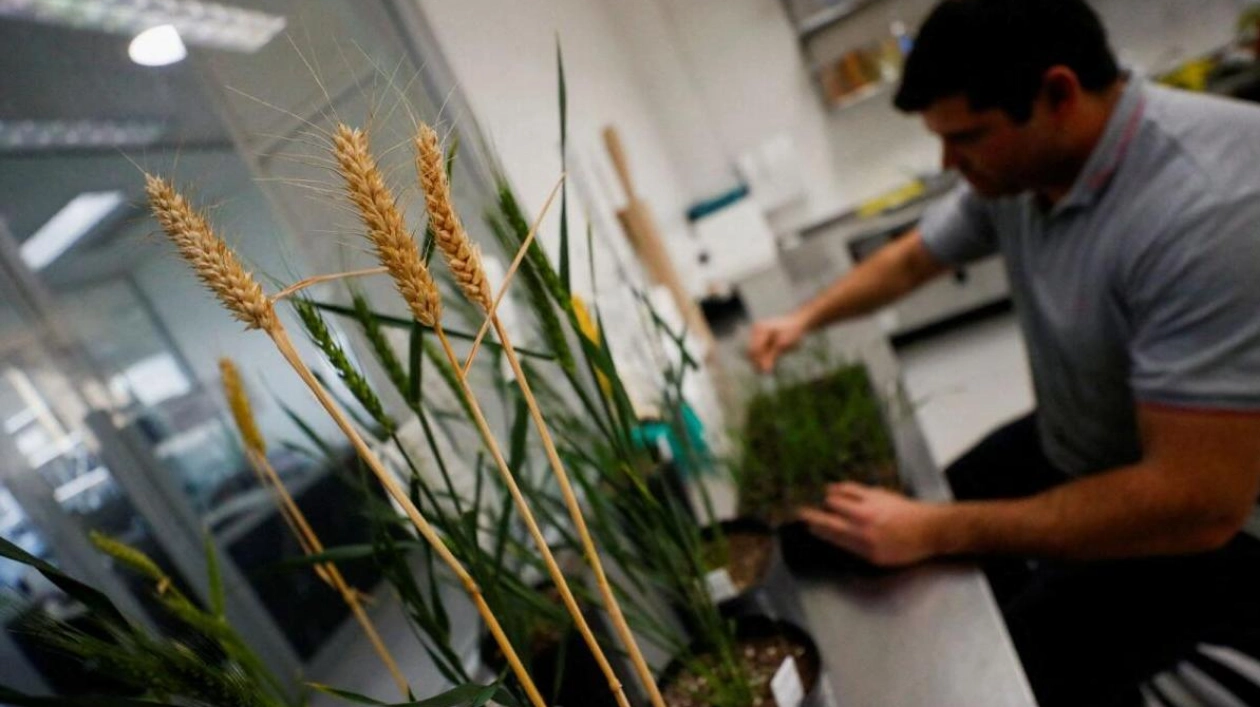Wheat plants genetically modified with the HB4 strain, featuring a gene that enhances drought tolerance, are showcased inside a laboratory at Bioceres Crop Solutions in Rosario, Argentina. Photo: Reuters file
Salmon with rapidly multiplying traits, drought-resistant wheat, and rice that emits minimal methane — these could soon be feeding the expanding global population, according to an expert who believes that genetically modified food is crucial for future food security. Dr. Daniel Kovich, a Science Advisor at the United States Department of Agriculture, spoke in Dubai during an international food safety conference on biotechnology's potential to feed 10 billion people by 2050. He cited examples of low methane rice and drought-resistant wheat, both currently in experimental phases. “Rice production is a significant source of methane,” he noted. “By inserting a gene from a barley plant, we alter how the rice interacts with the soil, thereby reducing methane emissions. Another example is drought-resistant wheat, achieved by inserting a gene from the sunflower plant.”
A genetic modification in salmon could boost its growth rate, a method already commercialized. “It grows much faster with the same feeding points as conventional salmon,” he explained, highlighting it as the first animal application of this technology. Dr. Kovich also mentioned the widespread use of genetically modified Bt corn in the US, where over 92% of corn-growing land utilizes this variant. He detailed how scientists discovered a soil bacteria gene with strong insecticidal properties, which, when added to corn plants, made them resistant to pests like European corn borer and corn rootworm, significantly reducing insecticide use and boosting corn production.
He further discussed roundup ready soybeans and rainbow papaya, both of which have significantly increased agricultural output. He noted that when such crops are introduced and made accessible to farmers, they are often preferred over regular variants due to the financial benefits. Despite these promising results, Dr. Kovich acknowledged several challenges. “The reality is that rDNA technology offers substantial rewards but comes at a high cost,” he said. “There are significant costs involved in development and deployment, and regulations are very stringent. This means the technique is only affordable when large quantities of the crop are grown globally.” He also mentioned the promising potential of genomic editing technology, which could make genetic changes easier and cheaper to implement, potentially broadening the use of this technology.
Source link: https://www.khaleejtimes.com






